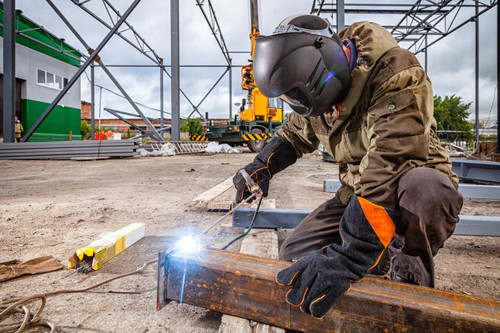What Are the Differences Between FR and Arc Flash Clothing?
You can never be too careful when it comes to fire safety. Protecting your workers in the field starts with understanding the differences between flame resistant (FR) and arc flash, or arc rated (AR), safety workwear, and clothing. These terms were often used interchangeably when describing personal protective equipment (PPE), but in 2012, the NFPA 70E created clear distinctions between the two.
Flame resistant clothing doesn’t offer the same level of protection as arc rated equipment. Learn the differences between the two.
Flame Resistant Clothing
Flame resistant clothing usually means the fabric will protect the wearer from the spread of fire in the workplace. However, “flame resistant” is now seen as a generic term in the safety equipment industry. This type of clothing does not guarantee protection against any particular hazard. While FR clothing can reduce the chances of ignition and protect workers against the spread of fire, some fabrics with this label do not.
The term flame resistant was widely used in various industries up until 2012 when the NFPA 70E changed the classification of these materials. Under the new guidelines, all flame resistant clothing must be subject to additional testing to meet the “arc rated” standard. This means that all arc rated clothing is inherently flame resistant, but not all FR clothing has an arc rating.
When buying FR clothing, look for items with a UL Classification label. This simply means that the product has been evaluated by a third-party testing facility to make sure they work the way they’re supposed to, protecting the company’s employees from a range of hazards and potentially dangerous situations. These products meet or exceed the latest industry standards.
Arc Flash or Arc Rated Clothing
To obtain the arc flash rating, FR clothing must be tested to see how well the material holds up against flash fires. According to ASTM F1959, at least 20 samples must be exposed to arc flash during the testing process. Regulators will measure the amount of heat transferred through the fabric using sensors. They will then compare this number against what’s known as the Stoll curve criteria, which determines the level of heat energy required to create a second-degree burn.
Exposing FR clothing to flash fires establishes the Energy Break-Open Threshold, represented in calories per square foot, or the point at which the fabric starts to break down due to excess heat. This number serves as the arc rating for the fabric.
As you can see, arc flash clothing tends to be more reliable against the spread of fire in the workplace. While FR clothing may protect your employees, these materials typically don’t reach the same threshold as AR clothing. To increase protection, AR materials usually offer more insulation, thus reducing the amount of heat and energy moving through the fabric.
Understanding the differences between FR and AR clothing is vital when it comes to the health and safety of your employees. Flame resistant clothing may protect your employees in certain situations, but arc flash or arc rated clothing is sure to give you and your team more peace of mind. Without these protective materials, some pieces of clothing can increase the chances of injury. The fabric can melt when exposed to extreme temperatures, leading to internal injuries, and lung and tissue damage.
Contact the professionals at PK Safety for more information on how to select the right personal protective equipment for your team.
Recent Posts
-
Customizing Gas Detectors: Tailoring Solutions to Fit Your Unique Requirements
In today’s diverse industrial landscape, a one-size-fits-all approach to safety simply doesn’t cu …Jul 3rd 2024 -
10 Ways to Prevent Wildfires
You can prevent wildfires by extinguishing flames before you leave the worksite. Avoid practicing …Jul 1st 2024 -
ANSI/ISEA 138 Safety Gloves: Ensuring Hand Protection
The human hand is an anatomical masterpiece and arguably the greatest tool attached to our bodies …Jun 25th 2024





